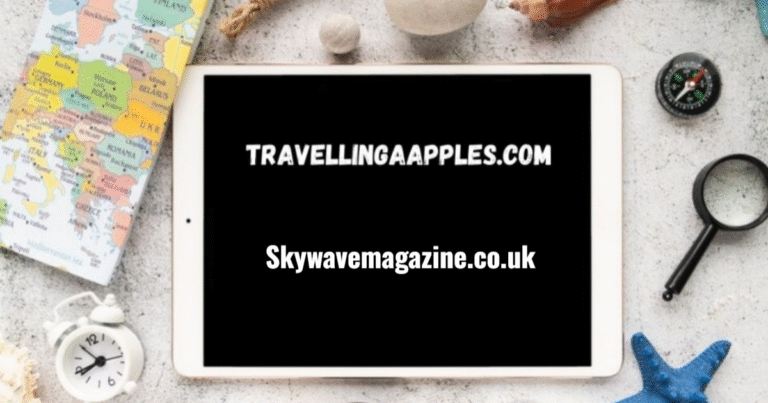
Introduction: Why Veneajelu is More Than Just a Ride
There is something inherently captivating about being on the water, and in Finland, the word “veneajelu” carries more than its literal meaning of “boat ride.” For Finns, veneajelu is a cherished cultural tradition, a leisurely escape into nature, and a way to strengthen social bonds. Unlike motorized commutes or fast-paced travel, veneajelu focuses on slowing down, appreciating landscapes, and enjoying the rhythmic embrace of water. Whether it happens on a calm summer evening with friends, during a family holiday, or as part of a cultural festival, veneajelu captures the soul of Finland’s deep connection with its lakes, rivers, and archipelagos.
The Deep Cultural Roots of Veneajelu
When we explore veneajelu, we are not only looking at an activity but at a cultural mirror of Finnish identity. Finland has more than 188,000 lakes, making it one of the most water-rich nations in the world. For centuries, waterways served as natural highways, binding villages, enabling trade, and shaping traditions. Over time, functional boat travel transformed into recreational experiences, giving rise to veneajelu as an admired pastime. Many Finns fondly recall summer evenings spent on small boats, gliding into the horizon where the midnight sun touches the waves. This emotional attachment explains why veneajelu is still celebrated despite modern conveniences like cars and airplanes.
Health and Wellness Benefits of Veneajelu
Scientific studies confirm what many enthusiasts already feel: time on the water is deeply therapeutic. Engaging in veneajelu allows participants to reconnect with nature, reduce stress levels, and enhance mental clarity. The gentle motion of the boat stimulates relaxation responses, while the panoramic scenery provides sensory stimulation that urban environments lack.
Some of the health-related advantages include:
- Reduced stress levels due to rhythmic water motion.
- Improved cardiovascular activity through rowing or light paddling.
- Enhanced emotional well-being by disconnecting from digital screens.
- Strengthened family ties when trips are enjoyed together.
Thus, veneajelu transcends being an outdoor hobby; it becomes a holistic wellness practice that nourishes both body and mind.
Different Types of Veneajelu: From Lakes to Seas
Not all veneajelu experiences are alike, as Finland offers a wide range of aquatic environments. Each brings unique sights, sounds, and emotions.
- Lake Veneajelu: Calm, reflective waters perfect for quiet evening rides.
- River Veneajelu: Slightly more dynamic, often accompanied by lush greenery.
- Archipelago Veneajelu: Offering breathtaking island views, birdlife, and fishing opportunities.
- Urban Veneajelu: Found in cities like Helsinki, where modern harbors meet traditional maritime culture.
Whether through rowing boats, sailboats, or modern motorboats, each variation offers new ways to engage with the water.
Popular Destinations for Veneajelu in Finland
Finland’s geography provides countless opportunities, but some regions are particularly famous for veneajelu.
| Destination | Unique Feature |
| Saimaa Lake District | Europe’s largest lake system, dotted with islands. |
| Turku Archipelago | Thousands of islands with cultural and historical sites. |
| Helsinki Coastline | Blend of urban life and natural beauty. |
| Oulu River | Northern experience with midnight sun reflections. |
These destinations are more than scenic spots; they serve as living landscapes where Finnish traditions continue to thrive.
Veneajelu as a Social Connector
One of the most overlooked aspects of veneajelu is its role in social bonding. Families, couples, and groups of friends often use boat rides as an opportunity to reconnect in a distraction-free environment. Unlike cafes or urban gatherings, veneajelu encourages deeper conversations, laughter, and storytelling. It also plays a significant role in Finnish summer celebrations such as midsummer festivals, where groups set out on evening boat rides to watch bonfires or enjoy communal meals.
Environmental Responsibility in Veneajelu
While veneajelu offers joy, it also comes with responsibilities. Finland places high importance on protecting its pristine lakes and waterways. Sustainable boating practices have become a central theme in discussions around veneajelu. Boat owners are encouraged to minimize fuel use, avoid plastic pollution, and respect natural habitats. Authorities also promote the use of electric boats, which reduce carbon footprints and noise pollution. This eco-conscious shift ensures that future generations will continue to enjoy veneajelu without compromising the environment.
Seasonal Variations: How Veneajelu Changes With Weather
Unlike tropical boating experiences, veneajelu is profoundly seasonal. Summers bring warm days and midnight sun, ideal for long, leisurely rides. Autumn transforms landscapes with fiery colors, creating a serene backdrop for reflective journeys. Winter, though not typically associated with veneajelu, inspires unique adaptations such as ice-fishing sleds and occasional heated boat tours in select areas. Spring introduces fresh beginnings, with melting ice symbolizing renewal for boaters eager to return to the water. This constant change adds layers of anticipation and novelty to veneajelu traditions.
Veneajelu as a Tourist Attraction
Tourism in Finland heavily promotes veneajelu, especially for international visitors seeking authentic experiences. Guided boat tours are common, ranging from short city excursions to full-day archipelago adventures. Some even offer luxury packages with onboard dining, sauna experiences, and live music. Tourists often describe veneajelu as their most memorable activity in Finland, largely because it combines natural beauty with cultural storytelling. This makes veneajelu not just a local tradition but a global attraction.
Technological Advancements in Modern Veneajelu
While tradition remains strong, veneajelu has embraced modern innovations. Today’s boats include GPS navigation, solar-powered systems, and even smart applications for weather monitoring. Safety equipment has improved dramatically, making rides more secure for families and tourists alike. Additionally, electric boats are gaining popularity for their eco-friendliness, silence, and cost-effectiveness. This fusion of heritage and technology reflects Finland’s ability to preserve traditions while moving forward with innovation.
Challenges Facing Veneajelu in the Modern World
Despite its popularity, veneajelu faces challenges that require collective solutions. Rising maintenance costs for boats, climate change affecting water levels, and over-tourism in certain regions all pose risks. Moreover, younger generations may prefer faster-paced recreational activities, reducing long-term engagement with veneajelu. Communities and policymakers must address these issues by making boating more accessible, environmentally sustainable, and appealing to youth.
Economic Significance of Veneajelu
Beyond leisure, veneajelu contributes to Finland’s economy. Boat manufacturing, rental services, guided tours, and tourism infrastructure collectively create jobs and revenue. Seasonal festivals centered around veneajelu attract both locals and international tourists, boosting hospitality industries.
| Sector | Contribution to Veneajelu Economy |
| Boat Manufacturing | Domestic and export markets |
| Tourism & Hospitality | Hotels, restaurants, guided tours |
| Local Communities | Event hosting, cultural festivals |
Thus, veneajelu is not merely cultural heritage; it is an economic engine sustaining rural and coastal communities.
The Future of Veneajelu: Tradition Meets Innovation
Looking ahead, veneajelu seems poised for a bright future. With sustainability and technology guiding the way, this age-old tradition continues to evolve. Educational programs now teach young people about safe boating, while eco-tourism initiatives integrate veneajelu into broader conservation projects. As interest in slow travel rises globally, veneajelu may gain international recognition as a symbol of mindful tourism. This makes it not only a Finnish pastime but also a potential export of cultural value.
Personal Experiences: Stories From Enthusiasts
To truly understand veneajelu, one must listen to the stories of those who live it. Families recall intergenerational traditions, where grandparents pass down skills of rowing and navigation. Tourists remember moments of quiet awe under northern skies. Couples cherish the intimacy of shared silence while floating across calm waters. These experiences reveal that veneajelu is not about distance covered but about memories created. It is in these stories that the true meaning of veneajelu comes alive.
Conclusion: The Timeless Beauty of Veneajelu
At its core, veneajelu embodies the spirit of slowing down, cherishing nature, and building connections. It is more than transportation, more than tourism—it is an intimate dialogue with water, culture, and community. In a world where speed and convenience often dominate, veneajelu offers an alternative: a mindful embrace of stillness and beauty. Whether experienced on a quiet lake, a bustling river, or through the vast Finnish archipelago, veneajelu continues to capture hearts across generations.
FAQs on Veneajelu
1. What makes veneajelu different from ordinary boat rides?
Veneajelu emphasizes leisure, cultural traditions, and appreciation of natural beauty rather than transportation or speed.
2. Can tourists easily participate in veneajelu in Finland?
Yes, there are numerous rental services, guided tours, and community events designed to welcome tourists.
3. Is veneajelu suitable for all age groups?
Absolutely. With proper safety measures, veneajelu can be enjoyed by families, seniors, and even children.





